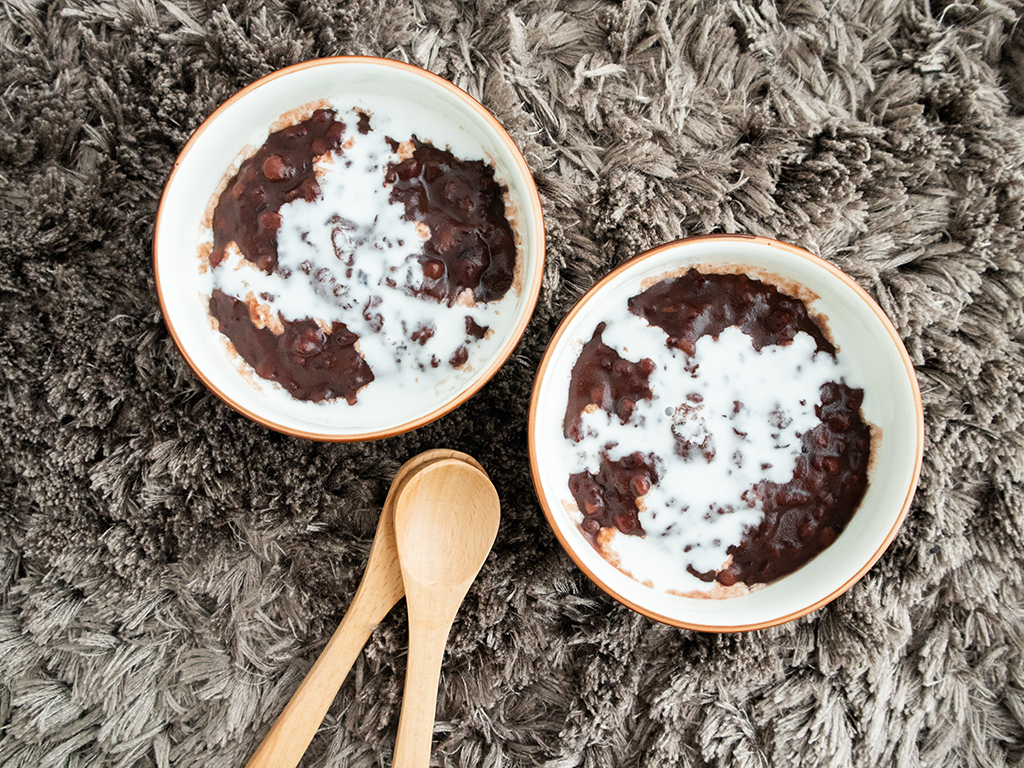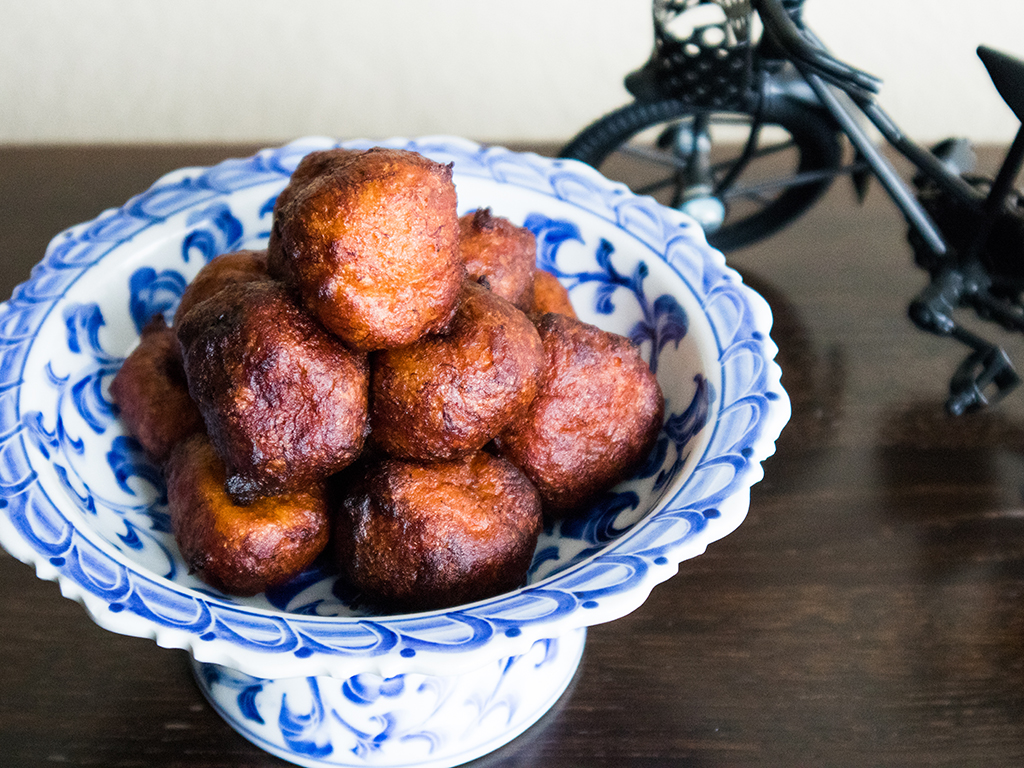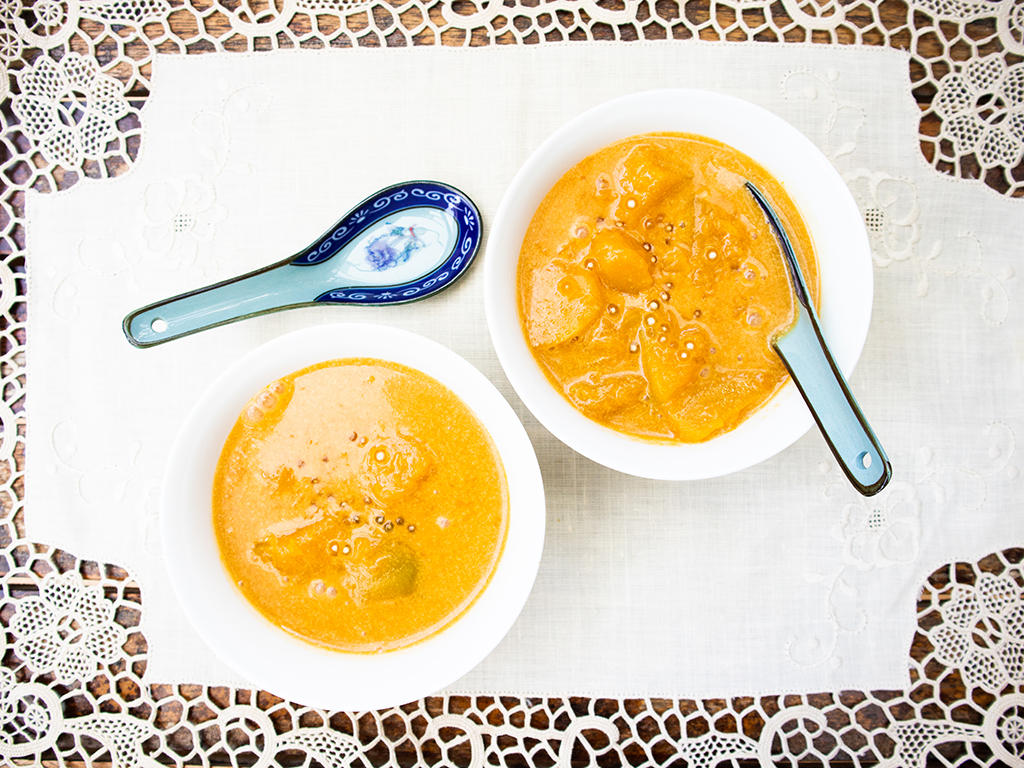
Pumpkin pengat, or pengant labu, is a fairly popular dessert especially among the Malay community in Malaysia. Sweet and rich, this creamy pumpkin dessert has its devoted lovers and adamant haters – one often either loves or hates its squishy pumpkin texture mixed in warm sweetened coconut milk and little bites of sago. It’s the kind of dessert you find the kids staying away from, while the older folk gleefully help themselves to one more serving or two. Hmm… this just may be a good thing!
Like many traditional Malay desserts, pumpkin pengat has a bad rep for being ‘fattening’, and, as such, has probably caused a generation younger of Malaysians to stay away from these classic desserts in pursuit of a fitter body. Well, some Malaysians, anyway. But as the world moves towards a trend of eating clean and consuming natural foods, a relook at the ingredients used in making this creamy pumpkin dessert may very well surprise you – it’s not as bad as you think! For one, it’s a dessert that’s certainly on-trend for being gluten-free and vegan, and, secondly, the ingredients used are minimally processed, if at all, including the sweetening ingredient of palm sugar, which is a great lower GI alternative to regular white or brown sugar.
The other great point about this creamy pumpkin dessert is that it’s very easy to make – all it requires is about 15 minutes of cooking time and you’ll have an extremely comforting, creamy sweet dessert in the palm of your hands – perfect for an evening tea-time treat, especially on a rainy day or when the weather is cooler than usual. Oh, what the heck, Malaysians gleefully and unashamedly. consume their bowls of pumpkin pengat on hot-weather sweaty afternoons too.
That sweet thing
Don’t get us wrong, while a bowl of pumpkin pengat is probably a lot better for you on the health and natural foods scale compared to a scoop of ice cream or a slice of cake, this creamy vegan pumpkin dessert can get sweet. But that’s the good part about making your own – you can add more or less coconut palm sugar according to how you like it. A little bit of salt (or sea salt if you prefer) is also key to making this dessert stand out and give it its rich and moreish flavour – probably the real reason why this dish is blamed for being fattening, because it’s difficult to stop at just one bowl when it’s made perfectly right! You can cut down on the salt if you like, but do not omit it altogether.
‘Pengat’ generally refers to a sweet, coconut milk porridge and popular varieties include those made with pumpkin, banana, tapioca as well as the undisputed king of fruits, durian. However, while all pengats use coconut milk, there are some differences to each recipe. Pumpkin pengat is a good place to start if you’re new to making this dessert as it requires less than ten ingredients and is very easy to make. All you need is regular pumpkin, or if you’re feeling fancy, try swapping it with other pumpkin varieties like butternut squash, delicata or blue Hokkaido pumpkin.
Let’s make some pengat.
Ingredients
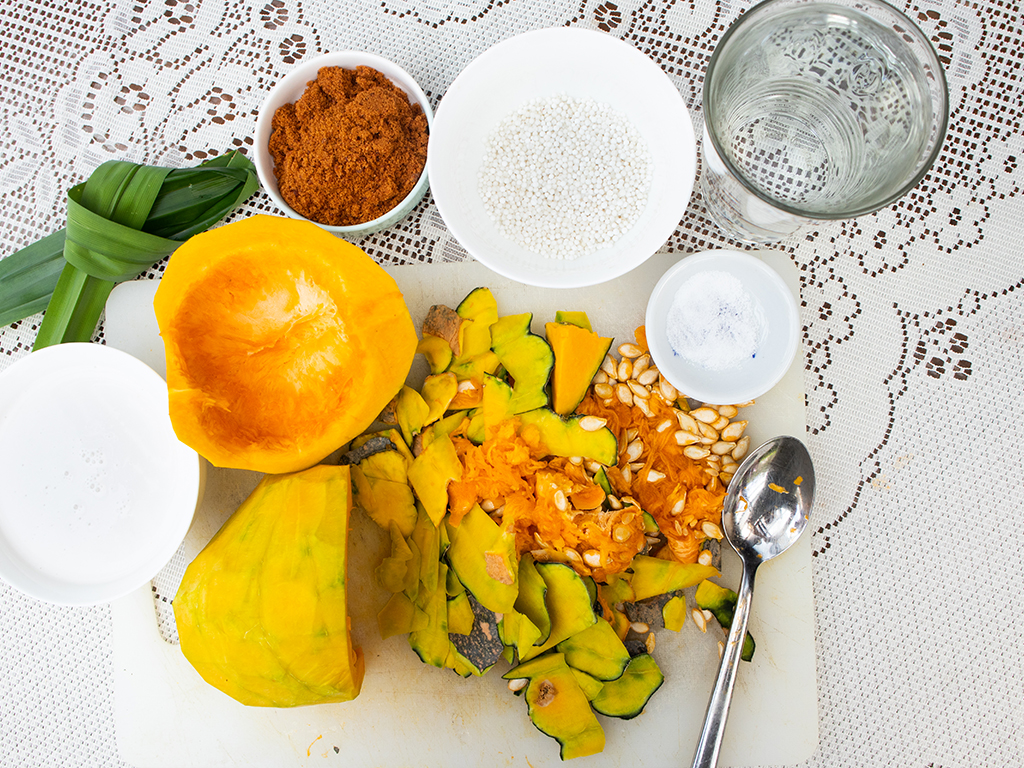
- 500g (roughly half of a 1.4kg whole medium) pumpkin
- 44g dried sago pearls
- 200ml coconut milk
- 90g (1/3 cup + ¼ cup) pure coconut palm sugar (gula merah)
- 6g (1 large) pandan leaf, knotted
- 720ml (3 cups) water
- ½ tsp salt
Pumpkin peeling
- If you purchased a whole pumpkin, first cut it in half and then half again.
- Remove seeds and stringy bits with a spoon. Discard.
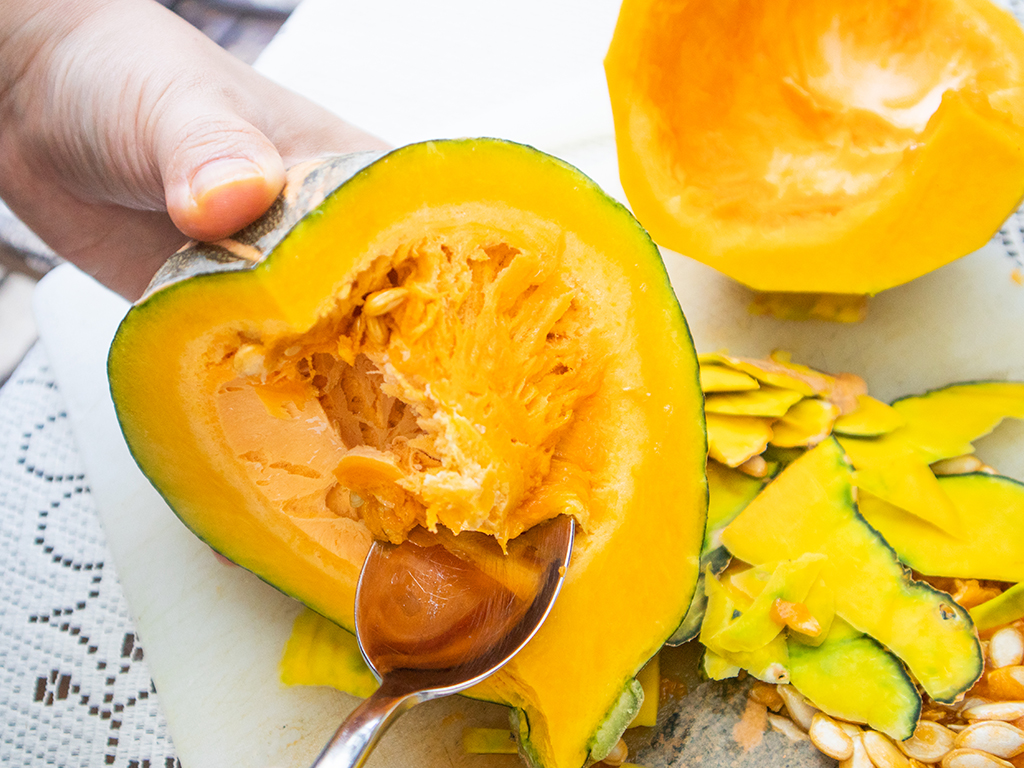
- Using a sharp knife, carefully slice off the stem (if any) and pumpkin skin, removing as much of the green parts as possible.
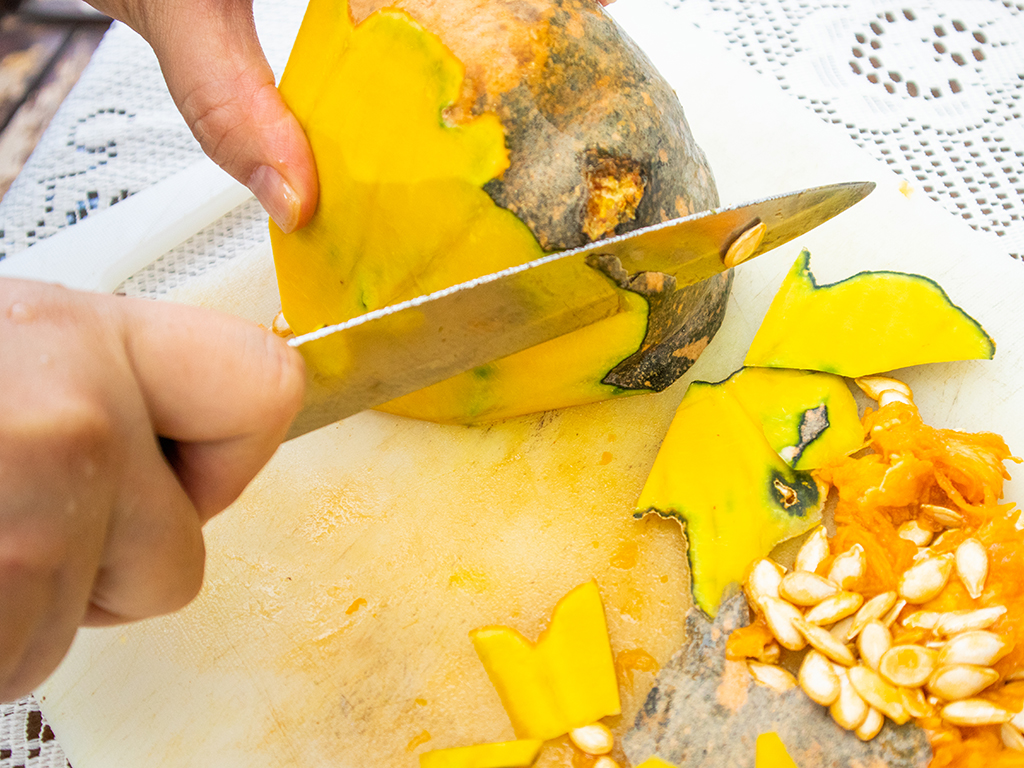
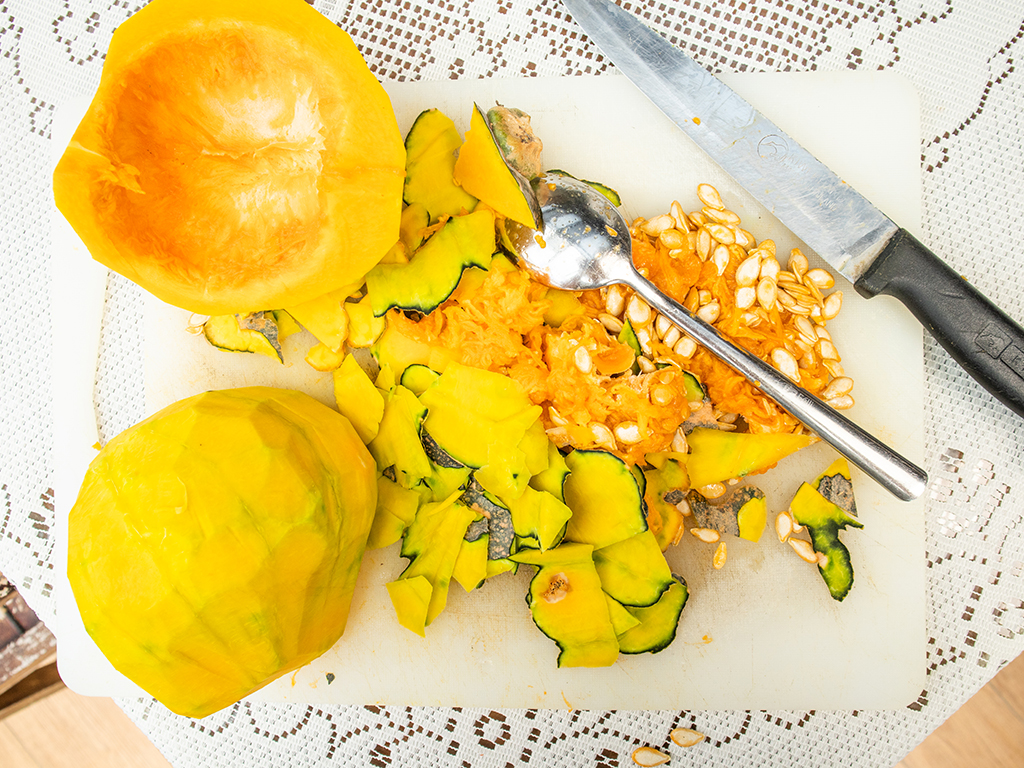
- Cut pumpkin into roughly 3cm by 3cm cubes.
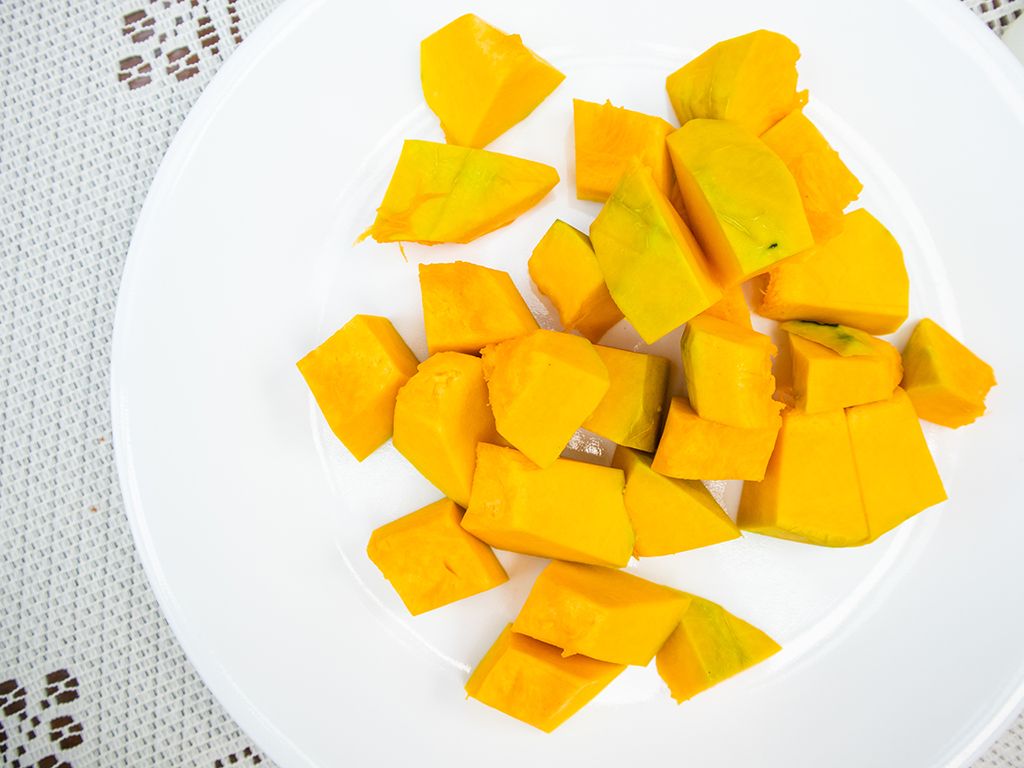
Cooking pumpkin pengat
- In a small to medium pot (make sure it fits all the pumpkin), add water, sago, salt and knotted pandan leaves and bring ingredients to a boil over medium heat.

- Once most of the sago pearls have turned translucent, about 2 minutes, add in the pumpkin.
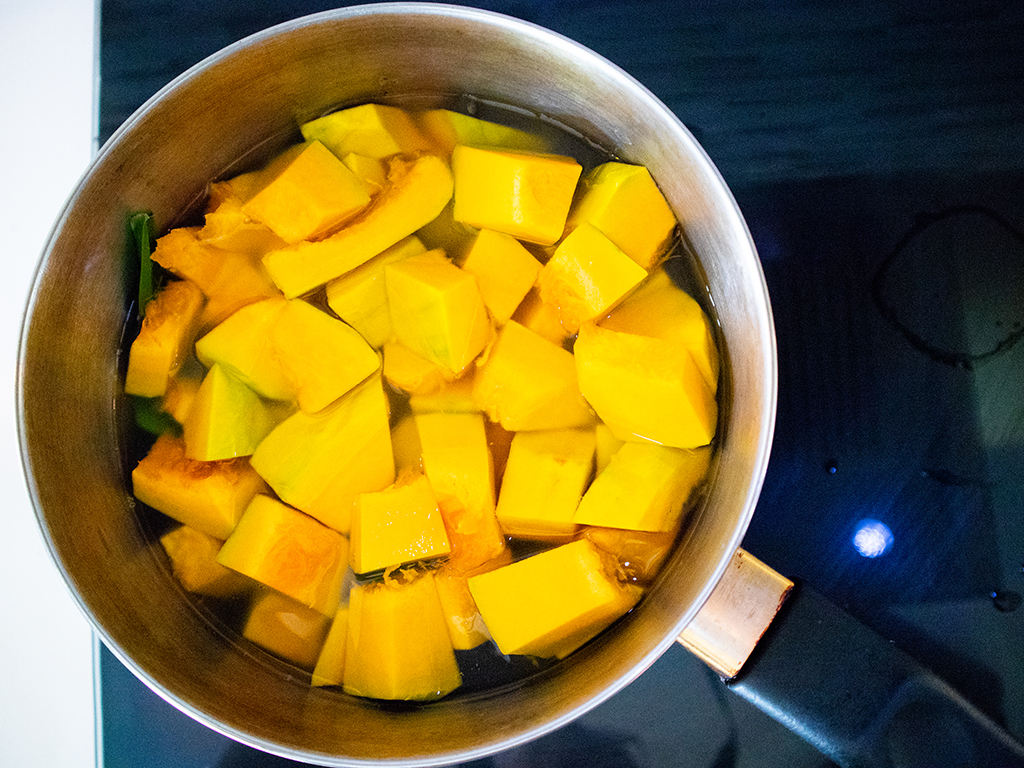
- Continue to cook over medium heat until the pumpkin cubes are soft and cooked through, about 7 to 8 minutes. Your pumpkin is sufficiently cooked when you can easily pierce it with a fork without any resistance.
- Turn the heat down to low and add coconut palm sugar and coconut milk. Stir to mix the ingredients.
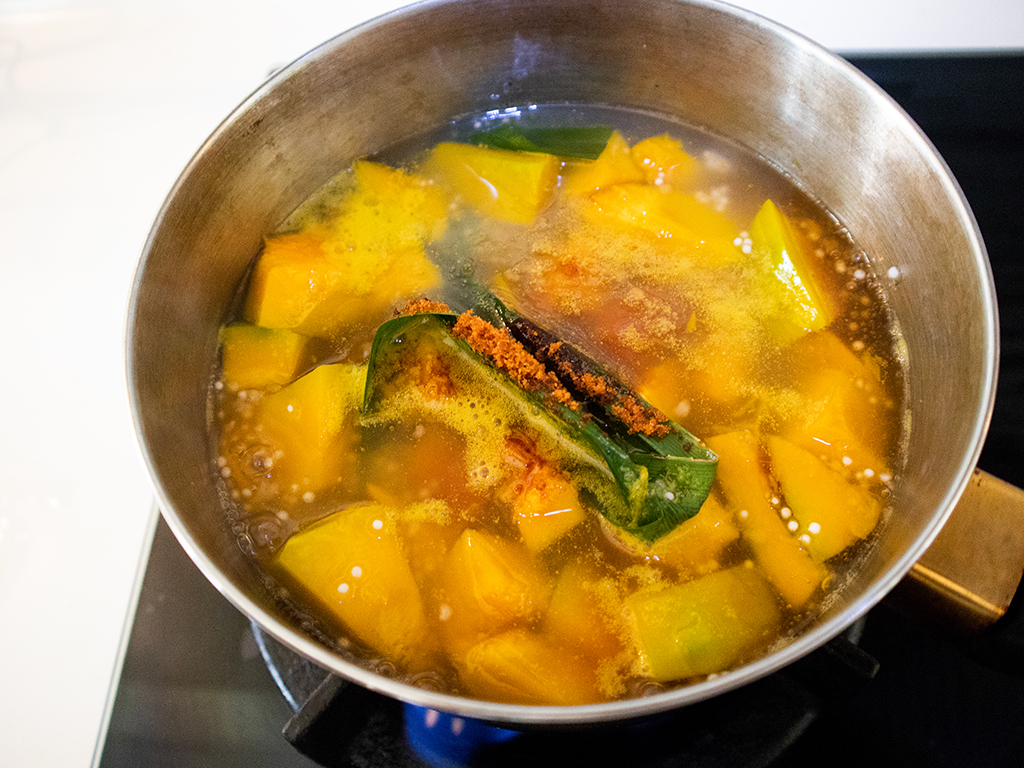

- Stirring occasionally, cook until coconut palm sugar has melted and coconut milk comes to a first boil, about 5 minutes. Immediately turn off the heat. It’s very important to keep an eye on this step as you do not want your coconut milk to split. If your coconut milk starts to look a little grainy, it’s time to take it off the heat.
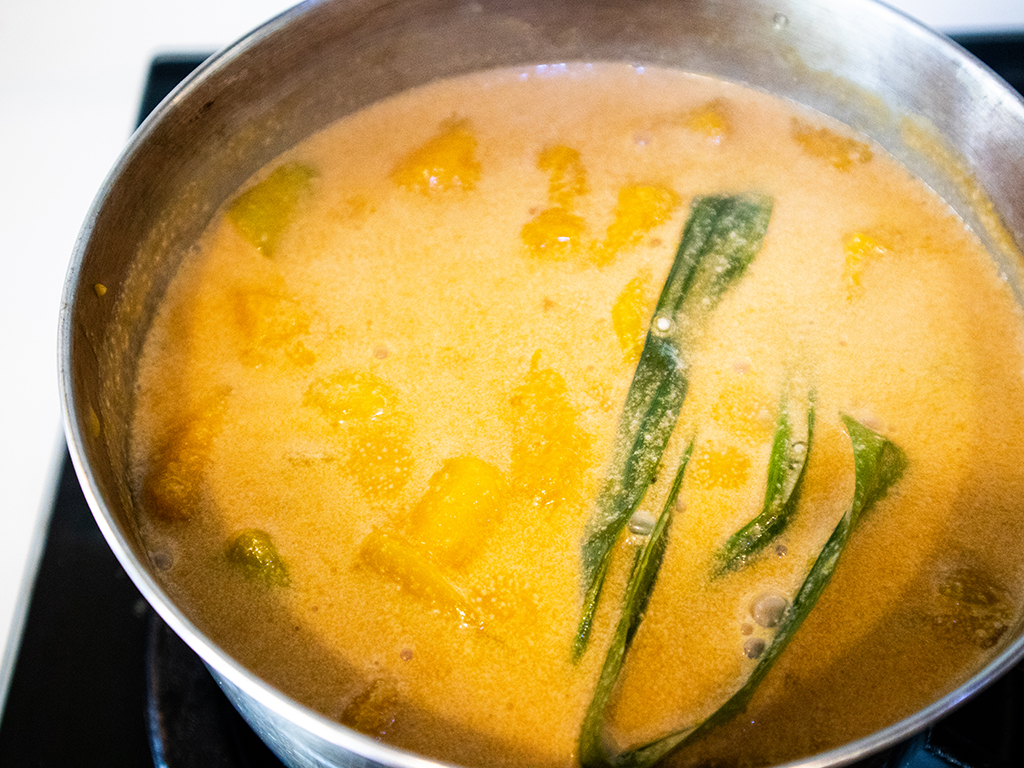
- Serve while still warm, scooping out a mix of pumpkin, sago and creamy coconut milk into each bowl.
Extra tips
- Pumpkins will lose a lot of weight once it’s been deseeded and peeled, which is why it’s important to start out with a heavier whole pumpkin.
- If you’re using a different type of pumpkin, adjust cooking time accordingly. The important part is to make sure the pumpkin is thoroughly cooked through before adding the sugar and coconut milk.
- If you’d like to adjust for sweetness and saltiness, do it in step four of ‘Cooking pumpkin pengat’ after the coconut milk has gone in. You can start with less salt and sugar and then add more if needed once the coconut milk has gone in and is mixed through. Just be quick as you want to avoid overcooking the coconut milk.
- Yes, you can add more sago pearls if you like!
- Is sago pearls the same as tapioca pearls? No, no, they’re not. They are made from two completely different plants! Tapioca pearls also tend to be chewier and denser than sago. However, if you’re completely in a pinch and can’t find sago anywhere, you could substitute sago pearls with tapioca pearls – just opt for the small variety of pearls (keeping in mind that they will expand when cooked) and be forewarned at the possibility of getting the stink-eye from your pengat purist makcik.
Stop, it’s pengat time
Short list of ingredients? Check. Easy to cook? Check. Tastes absolutely indulgent but is not as bad as it seems? Double check. Unless you absolutely detest pengat there’s really no excuse not to make it. And even if you do, you just might surprise yourself by how good it actually is when you try making it at home. It’s very unlike the sickeningly sweet and overly rich variety you’re served at weddings and whatnot (unless that’s how you like it!). And if you’re feeling guilty, just keep reminding yourself our pumpkin pengat recipe is gluten-free and vegan. How so very hip of you.
Share with us your pumpkin pengat shots by hashtagging your pictures with #butterkicap. And yes, while this recipe is so good, you really shouldn’t eat more than one bowl… ok… maybe two…

